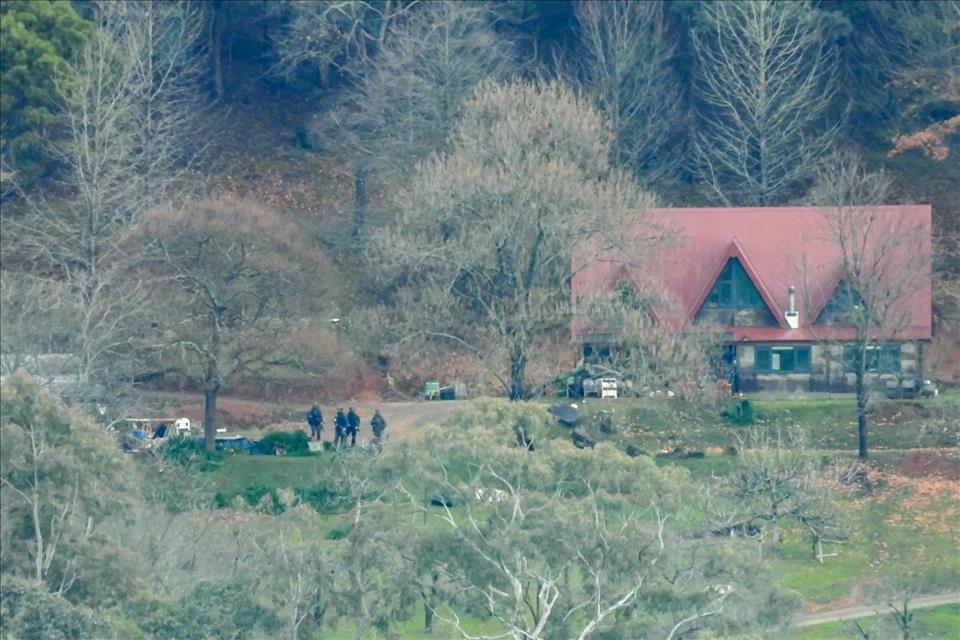
I'm A Former Hostage Negotiator. Here's Why Police Offered A Surrender Plan To Fugitive Dezi Freeman
I was a former police hostage negotiator for eight years – this is how and why surrender plans are used in these situations.
What is a surrender plan?Surrender plans are a very simple set of instructions given to the person wanted by police. They are easily understandable and remembered and can be carried out with minimal thinking.
While surrender plans are drawn up immediately in a hostage or a wanted search like this, they are rarely made public.
Making a surrender plan public too soon may alert criminals and those who support them what police are thinking.
Police will have Freeman's mobile phone number and will have been trying to contact him since he fled into bushland.
While mobile signals may be patchy, or his phone may have run out of battery, there's still a chance Freeman is online and following the news.
The aim of the surrender plan is to ensure the alleged offender knows what to expect so they and police negotiators are not surprised during this process.
Negotiators want an alleged offender fully compliant during their surrender, to control their every movement.
To get this control, negotiators will say:
Once the alleged offender says“yes”, the negotiator knows several things about them immediately:
-
they can hear what police are saying, so their audio functioning is good
they can see if the offender has any physical injuries that might prevent them following some instructions
they can gauge through the wanted person's speech and body coordination if they have the mental capacity to understand what is being said and carry out the instructions.
The negotiator will then ask them to repeat the instructions back so everyone involved is fully aware of what is expected.
The negotiator will then tell the alleged offender if they stray outside of the instructions, it may be considered a threat and police might take alternative actions.
Again, the negotiator will ask the wanted person if they understand this and have this repeated to them.
The negotiator will tell the wanted person to take five steps and on the fifth step to stop.
The negotiator will then issue another set of simple instructions and again ask the offender if they understand and to repeat them back.
This will be repeated until the alleged offender is laying face down and handcuffed.
Read more: Treacherous terrain: the search for alleged police killer Dezi Freeman
Why keeping things simple is crucialThis repetitive, simple, two-way conversation is important to reduce any misunderstanding]( between the wanted person and the negotiator about what is expected.
It also helps negotiators constantly assess the mental and physical condition of the alleged offender.
The surrender will not be rushed because the wanted person will be nervous and physically and mentally exhausted.
In the case of Freeman, his exposure to challenging weather, mountainous terrain and likely lack of food and water will have fatigued him.
He may also be fatigued mentally as he realises the ordeal has come to an end.
All these physical and psychological factors may affect his judgement.
The aim of a surrender planThe purpose of a surrender plan is to ensure the safety of the wanted person. Police want to get them before a court to hold them to account, and also allow the victims' families to seek explanations and possibly some form of closure.
During a surrender, police will be following the letter of the law and their training to ensure they cannot be criticised in court, opening a possible opportunity for an appeal based on the arrest.
The Victorian police commissioner's appeal to surrender, echoed by Freeman's wife , are intentional.
It is to send a message to Freeman that despite what he has allegedly done, he has options open to him to bring this to peaceful end.
Police do not want him to believe the only option is to fight his way out.
The appeal is also to send a message to others who might be considering assisting him with food or shelter.
This is to reduce possible lines of inquiries in trying to find Freeman. It can save time and resources and prevent police from being unnecessarily distracted by false or misleading sightings.
What happened at Porepunkah is uncommon in Australia, with only two similar events occurring in the past 13 years.
In 2012, convicted killer Malcolm Naden – who also shot a police officer – was arrested after one of the biggest manhunts in New South Wales history . He is now serving a life sentence.
Ten years later in Wieambilla, Queensland, Stacey, Gareth and Nathaniel Train ambushed and killed two police officers and a neighbour before being gunned down by Queensland police.
The surrender plan is an attempt from police to reassure Freeman they are not seeking revenge and there may be a way to bring this search to a close without further violence.

Legal Disclaimer:
MENAFN provides the
information “as is” without warranty of any kind. We do not accept
any responsibility or liability for the accuracy, content, images,
videos, licenses, completeness, legality, or reliability of the information
contained in this article. If you have any complaints or copyright
issues related to this article, kindly contact the provider above.


















Comments
No comment